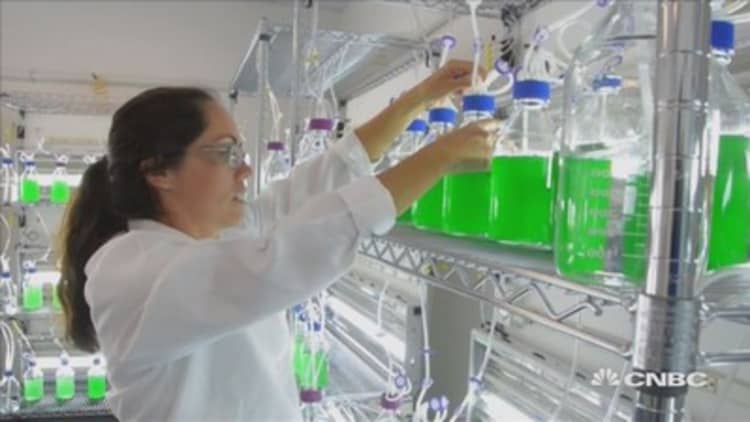An extraordinarily large mass of toxic algae off the West Coast of the United States has prompted state agencies to shut down crab and clam fisheries in at least two states, and is posing risks to recreational fishing and marine life.
The so-called "red tide" bloom doesn't pose a health risk to people who eat commercially caught fish, according to experts. But the Washington Department of Fish and Wildlife has shut down all crab fishing in its waters, and authorities in Oregon have closed that state's coast to digging for clams.
Such halts will likely have no significant impact on commercial fisherman, who have moved on to harvesting other species. But crabs or clams caught and eaten by recreational fishers pose a significant health risk, possibly causing seizures or even death.
Blooms are common, but some of the data suggest the current one may be the biggest in at least a decade. Scientists are concerned about domoic acid, a compound produced by a species of algae that can cause a variety of harmful symptoms.
The bloom is "geographically quite extensive," said Vera Trainer, an oceanographer with the Marine Biotoxins Program at the National Oceanic and Atmospheric Administration's Northwest Fisheries Center in Seattle. "We have reports of high domoic acid levels from Monterey Bay, California, all the way up to Homer, Alaska."
Read More
The NOAA announced this week that it will be sending scientists out to study the bloom, to determine its size and take samples for further research. Samples taken off the coast of Monterey Bay and the Central Oregon coast revealed the highest concentration of domoic acid ever recorded, according to a press release issued by NOAA. (Tweet this).
Scientists such as Trainer say the bloom may be connected to a large patch of warm water in the Pacific, but they cannot yet say for sure.
The phenomenon is sometimes called "red tide" since algae can give the water a rust-like color. But the term "red tide" is actually a misnomer, Trainer said. The blooms are not always red, and they are not associated with tides.
Read MoreRussia warns of 'new military confrontation' in Europe
That said, they are dangerous to marine animals and humans who are exposed to high levels of domoic acid.
It has been responsible for seizures and deaths in California sea lion populations that eat contaminated fish. The number of sea lions affected by "sea lion sickness" has increased dramatically in recent years, according to NOAA.
Domoic acid is produced by certain types of algae—called Pseudo-nitzschia—that is just one of the many species of algae making up the bloom.

Scientists are not exactly sure why the algae produces the toxin, but some think it helps the algae acquire iron, a mineral it needs to survive.
Trainer stressed that there is no reason to stop buying commercially harvested fish, which is usually monitored closely by local health authorities. She added that scientists have not made a conclusive link between the warmer water and the uptick in domoic acid.
Recreational fishers are definitely at risk of toxicity from eating locally caught clams, crabs, and even small fish such as anchovies and sardines, according to a recent advisory issued by the California Department of Public Health.
Read MoreWhy college degrees cost so much
Larger species of fish that do not feed on algae, such as salmon, are not affected by the toxin.
John Corbin, a fisherman from Astoria, Oregon, and chairman of the Oregon Dungeness Crab Commission, said that most commercial fisherman had already moved on to fishing for other species before the warnings about crab were issued.
"Its not affecting me at all. The crab season begins in December and goes until the following September, but most people quit by now," Corbin told CNBC.
Corbin said that his own boats begin fishing for black cod at this time of year, and he knows of many other fisherman that take their vessels up to the area around Bristol Bay, Alaska, to fish for salmon.
"Mostly it is business as usual," he said. "I think there is only one person still fishing for crab in Oregon."


